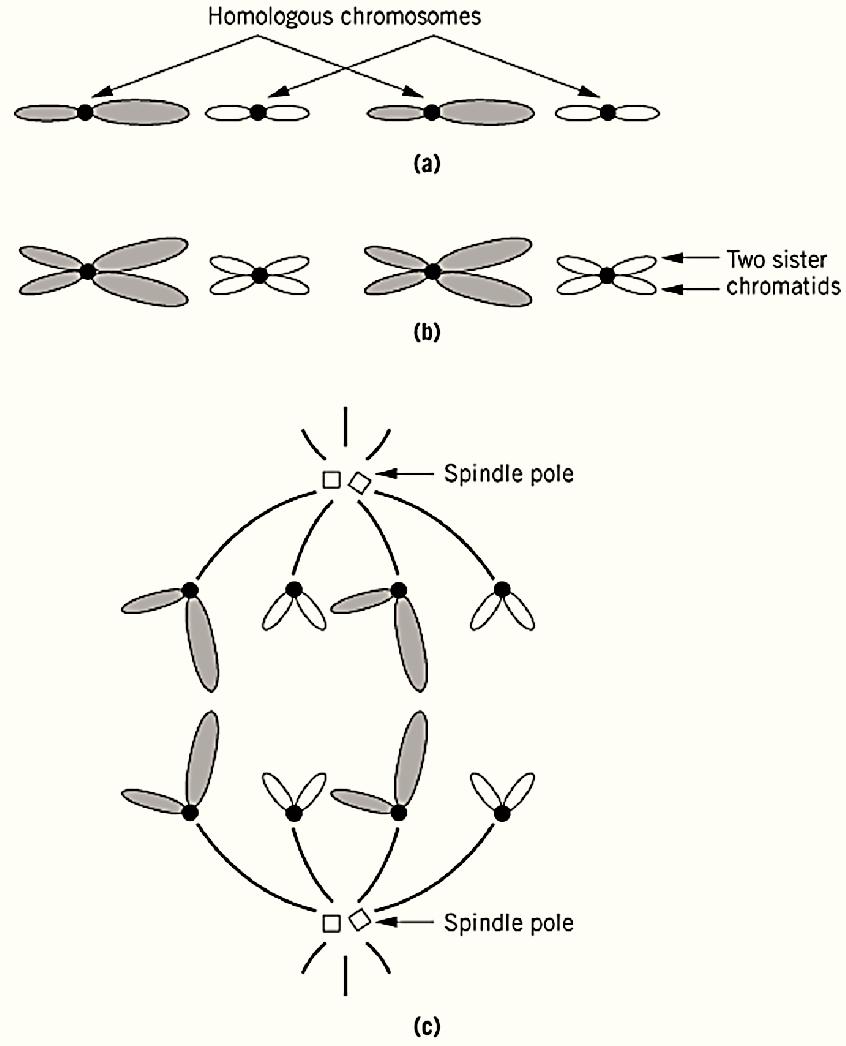


 النبات
النبات
 الحيوان
الحيوان
 الأحياء المجهرية
الأحياء المجهرية
 علم الأمراض
علم الأمراض
 التقانة الإحيائية
التقانة الإحيائية
 التقنية الحيوية المكروبية
التقنية الحيوية المكروبية
 التقنية الحياتية النانوية
التقنية الحياتية النانوية
 علم الأجنة
علم الأجنة
 الأحياء الجزيئي
الأحياء الجزيئي
 علم وظائف الأعضاء
علم وظائف الأعضاء
 الغدد
الغدد
 المضادات الحيوية
المضادات الحيوية|
Read More
Date: 28-4-2016
Date: 9-6-2021
Date: 16-5-2016
|
Chromatid
A chromatid is one of the two adjacent strands of a chromosome that are generated as a result of chromosomal duplication. The two chromatids are held together at the centromere and become visible during mitosis (Fig. 1, see top of next page). Chromosomal dynamics during the cell cycle are conveniently discussed in terms of the appearance and behavior of chromatids. It is during interphase that DNA is replicated (S-phase). Before the S-phase there is a gap known as G1, when the chromosomes are considered to be unineme, meaning that a single duplex DNA molecule runs the entire length of the chromosome. The amount of DNA in G1 per haploid genome is called the C-value. A diploid cell has a 2C DNA content. After the S-phase, in the gap known as G2, the chromosomes have duplicated and there is a 4C DNA content. Now each chromosome consists of two unineme sister chromatids. Mitosis begins at the end of G2. Whereas the chromosomes are too diffuse and decondensed to be visualized when somatic cells are in the interphase, during mitosis the chromosomes and chromatids become visible. Mitosis can be divided into four stages. During prophase, the chromatin in the chromosomes begins to condense so that they appear as morphologically indistinct, diffuse threads. At the end of the prophase, the chromosomes become well separated. Now each chromosome is distinctly double-stranded, consistent with two sister chromatids joined at the centromere. In the metaphase the chromosomes are maximally contracted and align on a plane, known as the metaphase plate. The metaphase plate is midway between the spindle poles and represents an integral component of the mitotic spindle. In the anaphase, the pairing region within the centromere dissolves. This allows the mitotic spindle to pull the two sister chromatids apart. Each pole receives a complete set of chromatids, representing all of the chromosomes. Finally in telophase the mitotic spindle breaks down, and the nuclear membrane is reassembled around the chromosomes. The chromosomes progressively decondense and cease to be visible by light microscopy.

Figure 1. Chromosomal dynamics during the cell cycle. (a) At the end of mitosis and in G1, there are two copies of each chromosome, called homologous chromosomes, in a diploid cell. (b) At the end of the S-phase and in G2, each chromatid in each chromosome has been duplicated, creating two sister chromatids joined at the centromere. (c(During the anaphase of mitosis the two sister chromatids separate and move to opposite spindle poles.
Sister chromatids also interact during meiosis, which represents the cell division, chromosomal and chromatid segregation events associated with gamete formation. There are two cell divisions during meiosis. Once again chromosomal dynamics are best described in terms of the segregation of chromatids. Initially, the chromosomes replicate, then the cell enters the first meiotic cell division. Homologous chromosomes are attracted to each other, forming stable pairs held together by the synaptonemal complex. Thus each structure consists of two chromosomes, each containing two sister chromatids. Recombination occurs between the maternal- and paternal-derived chromosomes. Sites of such genetic crossing over are called chiasmata. Chiasmata represent sites of physical breakage and reunion between nonsister chromatids. They generally encompass a few hundred to a few thousand base pairs of DNA. Finally, each pair of chromosomes separates. At the start of the second meiotic cell division, each chromosome consists of two chromatids joined by a centromere. Then the chromatids are aligned on a metaphase plate attached to a spindle. The centromere splits, and the two sister chromatids move to opposite poles. Then nuclei are reformed in each of the four haploid daughter cells. Thus for both mitosis and meiosis the mechanics of chromosome condensation, recombination, and segregation emphasize the fate of individual chromatids.



|
|
|
|
تفوقت في الاختبار على الجميع.. فاكهة "خارقة" في عالم التغذية
|
|
|
|
|
|
|
أمين عام أوبك: النفط الخام والغاز الطبيعي "هبة من الله"
|
|
|
|
|
|
|
قسم شؤون المعارف ينظم دورة عن آليات عمل الفهارس الفنية للموسوعات والكتب لملاكاته
|
|
|